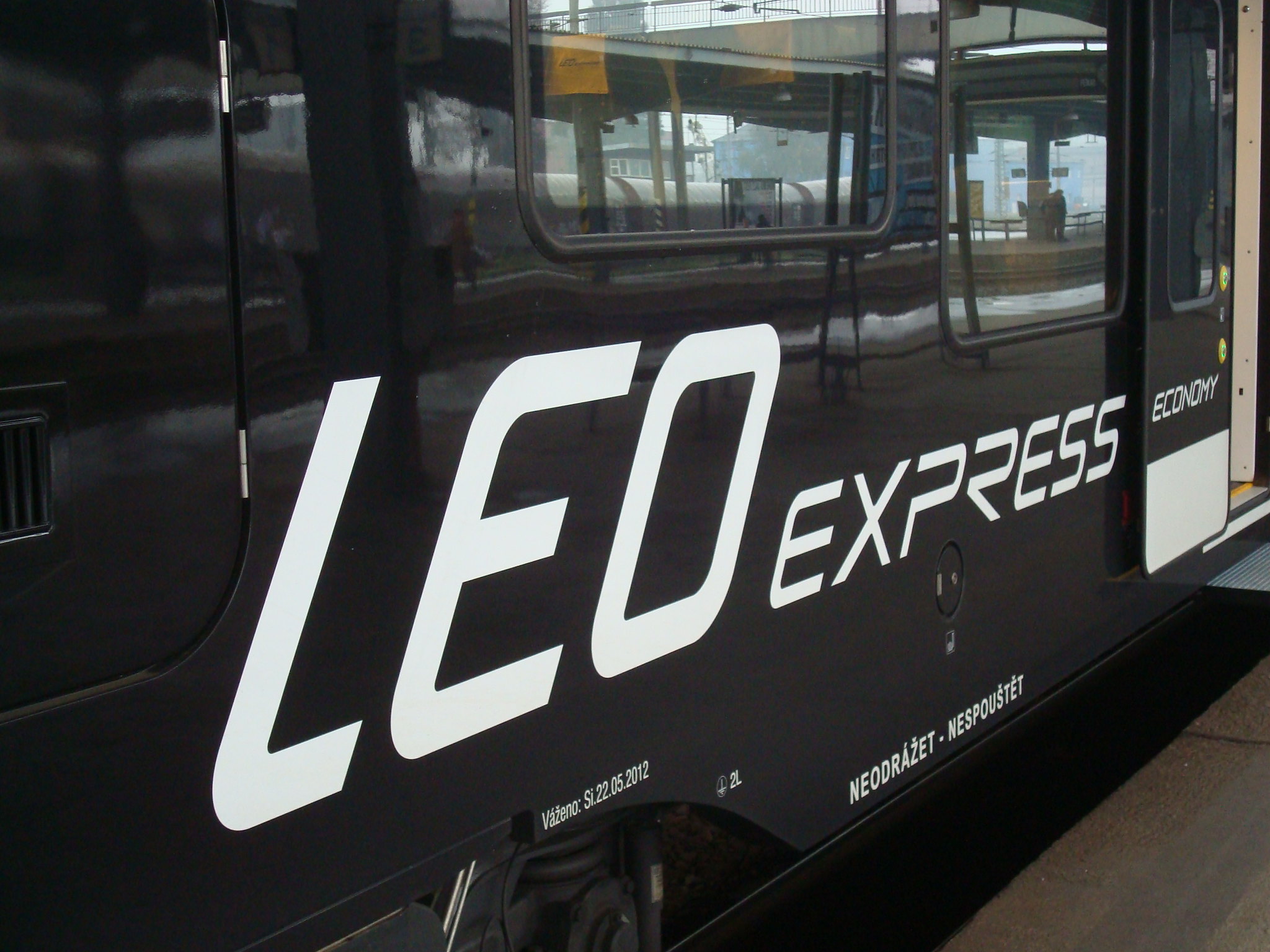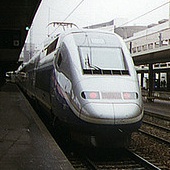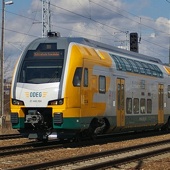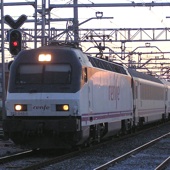I travel a lot by train. On all kinds of services, all over Europe. As Europe’s rail market supposedly opens up to competition with the 4th railway package, what can I conclude about where competition does and does not work?
1) The profitable long distance route
 This is the ideal location for competition in rail services. Think Hamburg-Köln, Wien-Salzburg or Praha-
This is the ideal location for competition in rail services. Think Hamburg-Köln, Wien-Salzburg or Praha-Brno Ostrava. Spare capacity is available, the route is between major cities and is profitable. New, private operators (HKX, WestBahn, LeoExpress respectively) can step in and challenge the incumbent operator. If one of the providers goes to the wall then at least there will be other services still. Competition prospects: good.
.
2) The profitable route with constraints
 These are routes where technical problems mean that competition is difficult. Either the route already operates at capacity (West Coast Main Line in the UK for example, anything through the Midi-Nord axis in Brussels), or technical issues with the route make competition difficult – security incompatibilities, or the high speed of the line (except NTV in Italy (which has plenty of headaches) there is no proper high speed competition anywhere in Europe – it’s too complex and expensive to procure trains as an entrant). Competition prospects: limited.
These are routes where technical problems mean that competition is difficult. Either the route already operates at capacity (West Coast Main Line in the UK for example, anything through the Midi-Nord axis in Brussels), or technical issues with the route make competition difficult – security incompatibilities, or the high speed of the line (except NTV in Italy (which has plenty of headaches) there is no proper high speed competition anywhere in Europe – it’s too complex and expensive to procure trains as an entrant). Competition prospects: limited.
.
3) Competitive tendering
 The system in place in various countries, most notably in Germany and Sweden for the tendering of regional routes. In the UK the franchise process is wider and more complex. These regionally tendered routes are not always profitable, and contracts are given by local governments and supported accordingly. Services like Metronom can bring genuine service improvements, while experience like ODEG can show what happens when things go wrong. Competition prospects: good in theory, at the tendering stage.
The system in place in various countries, most notably in Germany and Sweden for the tendering of regional routes. In the UK the franchise process is wider and more complex. These regionally tendered routes are not always profitable, and contracts are given by local governments and supported accordingly. Services like Metronom can bring genuine service improvements, while experience like ODEG can show what happens when things go wrong. Competition prospects: good in theory, at the tendering stage.
.
4) Unprofitable long-distance national routes
 Here the incumbent, normally state-owned, operator has to cope with high costs, creaking infrastructure, and low passenger numbers. But public service obligations mean that services are still broadly maintained. Think SNCF’s Intercités services, or RENFE’s non-AVE long distance services. Competition prospects: close to none.
Here the incumbent, normally state-owned, operator has to cope with high costs, creaking infrastructure, and low passenger numbers. But public service obligations mean that services are still broadly maintained. Think SNCF’s Intercités services, or RENFE’s non-AVE long distance services. Competition prospects: close to none.
.
.
5) Unprofitable long-distance or regional international routes
 Here no-one cares at all. These are services like Marseille-Genova, Venezia-Villach, Bayern-Praha, Berlin-Krakow. So while the infrastructure exists, the demand does not, and the public service obligations do not either. There is no prospect for competition as the routes are, on their own, not profitable. So the trains do not run, and are replaced with buses instead. Competition prospects: none.
Here no-one cares at all. These are services like Marseille-Genova, Venezia-Villach, Bayern-Praha, Berlin-Krakow. So while the infrastructure exists, the demand does not, and the public service obligations do not either. There is no prospect for competition as the routes are, on their own, not profitable. So the trains do not run, and are replaced with buses instead. Competition prospects: none.
.
Thoughts, comments and additional examples most welcome!
Images – all CC Licensed from Flickr: LeoExpress by Petr Dadák | TGV Duplex by Stefano Bertolotti | ODEG by Tegeler | Renfe Arco by Jordi | DB Bus by MvM84

Thank you very much for this article. It seems you confused Brno with Ostrava. Between Praha and Brno there is no competition between train operating companies at all, because the motorway is much straighter than the old k.k. priv. österreichische Staatseisenbahn-Gesellschaft railway line and buses have a high market share. Especially north of Brno there are a lot of curves, which slow down the trains. The motorway runs between Praha and Brno almost as the crow flies. Between Praha and Ostrava there is no motorway at all, that is why there are now three railway operators, two of them private (Leo Express and RegioJet).
There is one small problem I do have with all that private operators: There is no through ticketing, as a consequence there seem to be limited passenger rights when travelling on different operators with different tickets. If I use the Westbahn and then from Salzburg DB with a Sparpreis ticket, I may have a problem if the Westbahn train arrives late. It is annoying when searching for certain connections in DB or ÖBB timetable databases that it is not possible to simply switch off connections of that type.
Hey John,
I am not very sure of what you were trying to say by writing this article. I just would like to point out that I am very, very skeptical about rail liberalization. I consider myself very liberal (in the European sense, not the American) and tend to favor laissez-faire economic politics. But when it comes to rail, I am very conservative.
The best train system I have experienced so far is the Swiss (SBB-CFF-FFS) rail network. As I am sure you know, the Swiss have so far built only very few segments of HSL. However, they have been investing to improve their conventional network for decades, meaning ever-faster, reliable, extremely frequent services that literally get you to any valley in the country (and many of their mountains). Their “horaire cadencé” enables travel from almost anywhere in the country to any other place every 30 minutes, anytime between 5am and midnight. Cheap, comfortable, green, extremely frequent, and almost always faster than driving.
There are many things that I don’t miss about my days in Switzerland, but I honestly believe that their train system is the best in the world. Sure, they haven’t got the impressive French LGVs, but their network is extremely well adapted to their territory and their needs (and, thanks to the new transalpine tunnels European through-traffic (i.e. Italy from/to Germany) via Switzerland is destined to become a fast, efficient alternative.
Now, even if foreign trains (SNCF, DB, ÖBB, Trenitalia, and even Renfe) do operate within the Swiss territory, they do not compete against the CFF-SBB (or any of the smaller, public operators). They fully cooperate with them. If they did not, the very core of the Swiss system would collapse: the Swiss fully integrated transportation system means that when buying a ticket from A to C (via B) ANY available mean of transportation (that is, any train and/or bus) can be taken. For instance, this means that, when buying a train from the main station in Basle (Basel SBB) to the Zurich central station (Zürich HB -calling it Zürich Hbf would have been a big national offence it appears) the passenger can choose to ride any train: IR, IC (operated by the CFF-SBB), French TGVs or German ICEs. There are very few exceptions to this (you cannot board for instance Renfe’s and SNCF’s joint venture, Elipsos, between Geneva and Zurich; however, taking into account that this night train only operates a few times a week and that it takes almost twice as long to cover the distance between Geneva and Zurich as IC trains, this doesn’t seem like a big deal).
To be honest, the Swiss system works so well and is so affordable that I cannot see a single benefit that privatization could bring.
Another system that I’d give almost 5 stars out of 5 is the German one, although it has a few incoherent sides that could be improved.
On a total different page, and despite its many faults and defects, I’d like to point out SNCF’s ability to offer extremely affordable travel for basically anyone living in France.
Hence, I don’t know, man. ‘Cuz actually the most expensive, static and illogical operators in Europe are the cross-border ones (Thalys but above all, Eurostar), that are already open to competition. These agencies, in spite of being publicly owned, they focus on maximizing their profit, and this has NOT resulted in cheap fares or better travel conditions for European travelers. It is also worth mentioning the chaotic and erratic British system, which brought anything except for cheaper fares and/or safer and/or faster travel.
I think the EU rail liberalization might be a huge mistake that could potentially destroy good rail systems like the Swiss, the German, or even the Belgian one (despite its many run-down stations). I hate to say it, but state monopolies have worked relatively well so far in this field, and unlike air travel, I do not think liberalization could provide any significant gains: quite the opposite. I think the way to go would be to improve what’s already there instead of dramatically changing the very base of the European rail system. I am not against governments giving private and/or foreign companies the concession to operate certain lines/services (like BLS in Switzerland), but these should be fully integrated within the existing system. That’s as far as I would go.
Last question: is Switzerland required by EFTA law or the EU-Swiss bilateral agreements to liberalize their rail market too? I can’t count the number of times I have despised the Swiss for not being part of the EU, but in this case, I would be extremely happy if they could keep their rail system out of this mess.
Cheers
@Marco – thanks for the clarification. I was writing this article when not online (in a DB train through Schleswig-Holstein!) and hadn’t checked LeoExpress’s destination. Now corrected in the piece 🙂 As for your point on through ticketing – I agree with you.
@Leo – I agree the Swiss system is good. But it is also a really complex mix of public and private, with all kinds of operators, and with loads of partnerships with other countries’ firms as well. The relationship between SBB and BLS has been a complex one for a long time, and freight has also been partially liberalised through Switzerland for some time.
As for the overall point – what am I trying to say with this piece? Essentially – like it or not – liberalisation is happening in the EU, and there are some good reasons for it. There are also some reasons to oppose it. The thing is that it is not bad in all circumstances. We hence need to work out ways, if possible, to ensure the benefits are assured and the problems eliminated, with some EU-wide public service agreements for example.
Having studied the Swiss system for 1½ years, my main response to Leon would be to point out that Swiss rail is affordable for passengers only because it is massively subsidised with tax money, including road tolls. (Part of the point of my study was to see if we could think of ways to make it just as good for less money.)
@Martin
How much is massively subsidised?
And to be honest, I don’t mind subsidies. Any commuter systems (rail or bus) are subsidized. So are ALL roads (except toll ones), by the way. And the Swiss vignette does definitely NOT cover the costs of maintaining the current Swiss highway network, let alone the building of new stretches.
@Leon: Let’s pluck some numbers out of my report:
(Sorry Jon for spamming up your comments section, but nothing short of actually quoting my study will demonstrate the messiness and massiveness of the Swiss railway sector.)
“Of the CHF 1061 million of tax money spent on subsidies for Train Operating Companies (“TOCs”) in 2010 according to calculations by the Bundesamt für Statistik, only CHF 545 million came from the Confederation.”
“the Swiss Federal Assembly [voted SBB] a one-time CHF 1,148 bn subsidy in 2011 [to cover its pension fund]”
“In 2010, the amounts [of subsidy taken from the petroleum tax for cargo transport] were as follows:
Total subsidy for combined transport: CHF 200 million , including:
o SBB Cargo: CHF 22,4 million ,
o Hupac: CHF 64,2 million
o An unknown additional sum to the dominant company in the RoLa segment, RAlpin.
Subsidy for non-Transalpine cargo transport: CHF 15 million”
“To begin with, we note that in 2010 there was about CHF 800 million in Federal funding for regional passenger rail, and CHF 2,2 million for car shuttle trains.”
“the canton of Zürich, in its 2011 budget, spends CHF 195,3 million on public transport out of a total budget of about 13 billion. The city of Zürich, on the other hand, spends about CHF 623 million on public transport, compared to a total budget of CHF 7 billion, while Winterthur contributes CHF 15,8 million to the ZVV, the Züricher Verkehrsverbund, out of a total budget of 1,15 billion”
“the ZVV administers a total public transportation budget of about CHF 950 million, while its income from ordinary sources is only about CHF 575 million, a sum that already includes CHF 3 million in funding from neighbouring cantons and CHF 20 million in Federal funding. This leaves the ZVV short by about CHF 375 million, which has to be divided evenly between the canton and the municipalities”
“[SBB infra] receives CHF 150 million per year from SBB-Real Estate”
“The Performance Contract between SBB [infra] and the Federal Government [involves a subsidy of] CHF 1,65 billion. CHF 510 million concerns the operation and maintenance of the infrastructure, and CHF 1,14 billion is for investments”
“the Swiss Federal government and the cantons also subsidise maintenance and investment for non-SBB railways. In 2010, this concerned a total amount of CHF 626,9 million, CHF 192,5 million for operation and maintenance and CHF 434,4 for investments. ”
“In 2010, the [Finov] Fund received CHF 968,4 million in LSVA revenue, CHF 319,5 million from the petroleum tax and CHF 315,6 from the VAT, for a total of CHF 1,6 bn.”
“In 2010, the Fund actually ran an operating surplus. Compared to the CHF 1,6 bn in cash inflow, it spent CHF 1277 million on NEAT, CHF 34 million on Bahn 2000, CHF 8 million on the new project on the Future Development of Rail Infrastructure , CHF 98 million on the connection with the European High-Speed Railway network and CHF 140 million for noise reduction, resulting in an operating surplus of CHF 47 million. However, after the payment of CHF 204 million in interest to the state and third parties, the financial position of the Fund deteriorated by CHF 157 million. The most recent data for FinöV show that the fund has so far borrowed about CHF 7,7 billion.”
“the additional subsidy granted in 2011-2012 to compensate for the strength of the Swiss Frank against the Euro. Under this temporary programme BLS Cargo, SBB Cargo International, Crossrail and TX Logistik received CHF 11,2 million in December 2011 and CHF 21 million in January 2012.”
“The [cantonal subsidy for non-Federal infrastructure] is about CHF 250 million per year.”